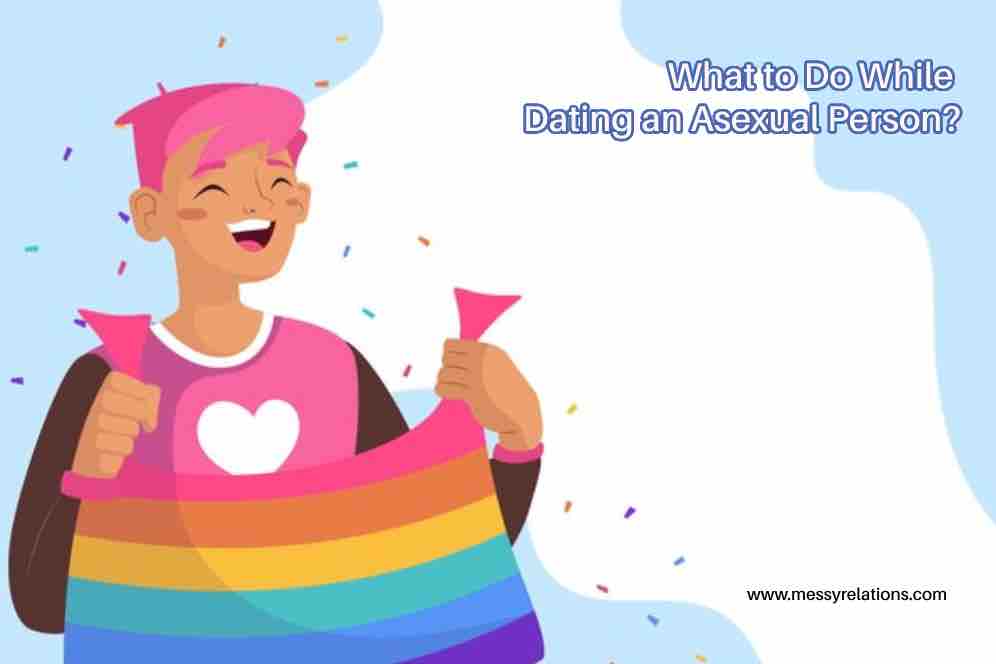In the diverse spectrum of human sexuality, asexuality stands out as a lesser-known orientation, often surrounded by misconceptions and a lack of understanding. Dating an asexual person brings its unique set of challenges and rewards, requiring empathy, communication, and a willingness to navigate love differently. This comprehensive guide aims to shed light on the nuances of dating an asexual individual, offering insights and strategies for cultivating a fulfilling relationship.
Who is an Asexual Person?
Asexuality is a sexual orientation characterized by a lack of sexual attraction towards others. It’s important to note that asexuality exists on a spectrum, and experiences can vary widely among individuals. Some asexual people might experience romantic attraction (desiring a romantic relationship without sexual elements) while others might not feel romantic attraction at all. Understanding this diversity is crucial when entering a relationship with an asexual person, as it shapes the dynamics and expectations of the partnership.
What to Do While Dating an Asexual Person?
1. Understanding Over Assumption
One of the most important things to remember when dating an asexual person is that asexuality is a valid orientation, not a phase or a choice. It’s crucial to approach the relationship with an open mind, free from assumptions about what the person might need or want based on societal norms of sexuality and romance.
2. Communication is Key
Open and honest communication forms the backbone of any relationship, but it’s especially vital when dating an asexual person. Discussing boundaries, comfort levels, and expectations can help both partners understand each other’s needs and navigate the relationship more smoothly.
3. Romance Isn’t One-Size-Fits-All
Romantic gestures and expressions of love don’t have to be tied to sexual attraction. Finding unique and personalized ways to show love and appreciation can strengthen the bond between partners and create a deeply fulfilling romantic experience.
How to Handle a Relationship While Dating an Asexual Person?
1. Respect Boundaries
Every individual has their own set of boundaries, and it’s essential to respect and honor these in the relationship. This might mean redefining intimacy or finding non-sexual ways to connect on a deep level. The key is to have ongoing conversations about what feels right for both partners.
2. Find Common Ground
Focusing on shared interests, values, and activities can fortify the relationship’s foundation. Whether it’s a love for nature, art, or culinary adventures, shared experiences can foster a strong connection beyond sexual attraction.
3. Be Patient and Understanding
Patience and understanding are vital when navigating a relationship with an asexual partner. There might be times of confusion or frustration, but it’s important to approach these moments with empathy and a willingness to understand your partner’s perspective.
4. Seek Support
Both partners can benefit from seeking support, whether through friends, family, or communities that understand asexuality. Engaging with asexual forums or groups can provide valuable insights and help partners feel less isolated in their experiences.
Can You Have a Long-Term Relationship with an Asexual Person?
The short answer is yes, absolutely. Like any relationship, a partnership with an asexual individual can flourish into a long-term commitment with mutual respect, understanding, and love at its core. Here are some key considerations for building a lasting relationship:
1. Mutual Respect
Respecting each other’s orientations, needs, and boundaries is non-negotiable. This mutual respect forms the foundation of trust and understanding necessary for any long-term relationship.
2. Creative Intimacy
Intimacy can take many forms beyond the sexual realm. Emotional intimacy, intellectual connections, and shared experiences can all contribute to a deep and meaningful relationship. Finding what works best for both partners can make the relationship uniquely fulfilling.
3. Navigating Challenges Together
Every relationship faces challenges, but how partners navigate these obstacles together determines the relationship’s resilience. Being open to seeking help, whether through counseling or community support, can provide strategies for managing any issues that arise.
4. Celebrating the Relationship
Every relationship is unique and has its own beauty. Celebrating the special connection, rather than focusing on societal expectations, can help partners appreciate the unique journey they’re on together.
Dating an asexual person requires an open heart, an open mind, and a willingness to explore the many dimensions of love beyond physical attraction. By fostering open communication, respecting boundaries, and celebrating the unique bond shared, a relationship with an asexual person can be just as fulfilling, if not more so, than any other relationship. It’s about understanding, respect, and a shared commitment to nurturing the connection in a way that works for both partners. With these foundations, there’s every possibility for a deep, lasting, and meaningful partnership.
What not to Do While Dating an Asexual Person?
Dating an asexual person offers a unique perspective on relationships, emphasizing emotional intimacy and personal connection over physical attraction. Asexuality, characterized by a lack of sexual attraction to any gender, doesn’t equate to a lack of romantic feelings. Understanding and respecting this distinction is crucial for a healthy and fulfilling relationship. Here are essential pointers on what not to do while dating an asexual person, ensuring respect, understanding, and love remain at the forefront of your connection.
1. Don’t Assume They’ll Change
One of the most common misconceptions about asexuality is that it’s a phase or something that can be changed. This assumption not only undermines the person’s identity but can also create a rift in the relationship. It’s important to understand that asexuality is a legitimate sexual orientation, and respecting your partner’s identity is fundamental.
2. Avoid Equating Love with Sex
In many societies, love and sexual attraction are often seen as inseparable. However, when dating an asexual person, it’s crucial to recognize that love isn’t solely expressed through sexual acts. Emotional intimacy, shared experiences, and mutual respect can all be profound expressions of love.
3. Don’t Neglect Open Communication
Communication is the bedrock of any relationship, more so when dating an asexual person. Avoid making assumptions about your partner’s feelings or boundaries. Instead, foster an environment where open and honest communication is encouraged, allowing both partners to express their needs, desires, and concerns freely.
4. Don’t Dismiss Their Asexuality as a Lack of Experience
Another common mistake is attributing asexuality to a lack of sexual experience or exposure. This perspective not only invalidates the person’s orientation but also dismisses their understanding of their own desires and boundaries. Recognize that asexuality, like any other orientation, doesn’t stem from inexperience but is an intrinsic part of who they are.
5. Avoid Pressuring Them into Sexual Situations
Respecting boundaries is essential in any relationship, particularly when dating an asexual person. Avoid pressuring or coercing your partner into situations where they might feel uncomfortable or obligated to act against their orientation. Consent and comfort should always be at the forefront of any physical interactions.
6. Don’t Overlook the Importance of Non-Sexual Intimacy
Physical closeness and affection can take many forms beyond sexual intimacy. Neglecting the importance of non-sexual intimacy, such as cuddling, holding hands, or sharing a heartfelt conversation, can lead to a lack of connection. Explore and embrace diverse ways of expressing affection and love.
7. Don’t Isolate Them from Support Networks
Asexuality, while becoming more recognized, is still not widely understood. This lack of understanding can lead to feelings of isolation or alienation for asexual individuals. Avoid actions that might further isolate your partner from communities or support networks where they find understanding and acceptance.
8. Avoid Making Their Asexuality the Center of Your Relationship
While it’s important to acknowledge and respect your partner’s asexuality, it shouldn’t define your entire relationship. Avoid focusing solely on this aspect of their identity. Instead, celebrate the multitude of qualities, interests, and experiences that make up your partner and your relationship.
9. Don’t Forget to Check in with Your Own Needs
In the process of being mindful and supportive of your asexual partner, don’t neglect your own needs and feelings. It’s important for the relationship’s health that you also feel fulfilled and respected. Regular check-ins with yourself and your partner can ensure that both parties feel valued and heard.
10. Avoid Stereotyping Asexual People
Asexuality, like any orientation, exists on a spectrum, and experiences can vary greatly from one individual to another. Avoid lumping all asexual people into a single category or assuming that your partner’s experiences or feelings mirror those of all asexual individuals. Embrace their individuality and the unique aspects they bring to the relationship.
Dating an asexual person requires empathy, understanding, and a willingness to see love and intimacy through a broader lens. By avoiding these common pitfalls, you can build a relationship that celebrates both partners’ needs and identities, fostering a deep, meaningful connection that transcends conventional expectations of romance and intimacy. Remember, at the heart of any relationship, asexual or otherwise, lies mutual respect, open communication, and a genuine appreciation for the unique individual you’re with.

Hi, I am Ashima Kalra. I have been into blogging since a decade. I have written various articles, blogs for different online magazines all this while. In 2023, I decided to launch my own online magazine on a topic that interests me a lot that is Traditional and Modern Relationships. I’ve always found this area interesting. Every now and then I come across various terminologies when it comes to relationship. Then there are different levels I feel I have crossed in this area. So I decided why not share what I know and learn more from people around the world.




